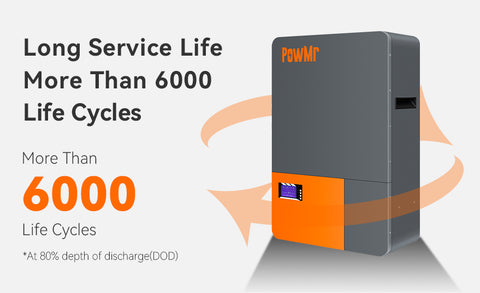การจำแนกประเภทแบตเตอรี่โซลาร์เซลล์: แบตเตอรี่โซลาร์เซลล์
การพัฒนาสำหรับแบตเตอรี่โซลาร์แบ่งออกเป็นสามรุ่น รุ่นแรกเป็นตัวแทนของซิลิคอนโมโนคริสตัลไลน์และซิลิคอนโพลีคริสตัลไลน์ในฐานะแบตเตอรี่โซลาร์ซิลิคอนคริสตัล รุ่นแรกของเทคโนโลยีแบตเตอรี่โซลาร์ที่ใช้ซิลิคอนคริสตัลเป็นวัสดุได้ถูกพัฒนาและใช้งานอย่างแพร่หลาย แต่ความต้องการวัตถุดิบที่สูงของแบตเตอรี่โซลาร์ซิลิคอนโมโนคริสตัลไลน์และกระบวนการผลิตที่ซับซ้อนของแบตเตอรี่พลังงานแสงอาทิตย์ซิลิคอนโพลีคริสตัลไลน์และข้อบกพร่องอื่น ๆ ทำให้ผู้คนเริ่มทำการวิจัยและพัฒนารุ่นที่สองของแบตเตอรี่โซลาร์ฟิล์มบาง แบตเตอรี่โซลาร์ ซึ่งรวมถึงแคดเมียมเทลลูไรด์ (CdTe), แกลเลียมอาร์เซไนด์ (GaAs) และสารประกอบคอปเปอร์อินเดียมแกเลียมเซเลไนด์ (CIGS) ซึ่งเป็นตัวแทนของแบตเตอรี่โซลาร์เริ่มกลายเป็นจุดสนใจในการวิจัย เมื่อเปรียบเทียบกับแบตเตอรี่ซิลิคอนคริสตัล แบตเตอรี่โซลาร์ฟิล์มบางต้องการวัสดุน้อยกว่าและผลิตได้ง่ายกว่าในระดับขนาดใหญ่ ดังนั้นจึงแสดงให้เห็นถึงข้อได้เปรียบในด้านการลดต้นทุนและประสิทธิภาพของพวกมันก็ค่อย ๆ ดีขึ้น รุ่นที่สามมีพื้นฐานมาจากประสิทธิภาพสูง เทคโนโลยีสีเขียว และนาโนเทคโนโลยีขั้นสูงของแบตเตอรี่โซลาร์ใหม่ เช่น แบตเตอรี่โซลาร์ที่ไวต่อสีย้อม (DSSCs), แบตเตอรี่โซลาร์แคลเซียมไททาไนต์ (PSCs) และแบตเตอรี่โซลาร์ควอนตัมดอท (QDSCs) เป็นต้น ปัจจุบัน แบตเตอรี่โซลาร์ทุกประเภทได้มีการพัฒนาอย่างมาก形成模式การพัฒนาของแบตเตอรี่โซลาร์ที่มีพื้นฐานจากแบตเตอรี่โซลาร์ซิลิคอนคริสตัล แบตเตอรี่โซลาร์ฟิล์มบางเป็นวัตถุการพัฒนา และ DSSCs, PSCs และ QDSCs เป็นแนวหน้า.

1. ประเภทแรกของแบตเตอรี่พลังงานแสงอาทิตย์
1.1 แบตเตอรี่โซลาร์เซลล์ซิลิคอนโมโนคริสตัล
ซิลิคอนโมโนคริสตัลไลน์เป็นประเภทแบตเตอรี่โซลาร์ที่มีความเป็นผู้ใหญ่และเสถียรที่สุดในบรรดาแบตเตอรี่โซลาร์ซิลิคอนคริสตัลทั้งหมดในแง่ของกระบวนการผลิตและเทคโนโลยี ทฤษฎีแล้ว แถบห้ามที่ดีที่สุดของวัสดุที่ตอบสนองต่อแสงอาทิตย์อยู่ที่ประมาณ 1.4 eV และความกว้างของแถบห้ามของซิลิคอนโมโนคริสตัลไลน์อยู่ที่ 1.12 eV ซึ่งเป็นวัสดุเดียวที่ใกล้เคียงที่สุดกับแถบห้ามที่ดีที่สุดที่รู้จักกันว่ามีอยู่ในธรรมชาติ แบตเตอรี่โซลาร์ซิลิคอนโมโนคริสตัลไลน์ถูกเตรียมหลักๆ ผ่านการทำความสะอาดเวเฟอร์และการทำฟลีซ การทำจุดเชื่อมต่อการแพร่กระจาย การกัดขอบ การกำจัดฟอสฟอรัสจากแก้วซิลิคอน การเตรียมฟิล์มป้องกันการสะท้อน การทำอิเล็กโทรด การเผา และอื่นๆ หลังจากการพัฒนาหลายปี กระบวนการผลิตและประสิทธิภาพของแบตเตอรี่โซลาร์ซิลิคอนโมโนคริสตัลไลน์ได้รับการปรับปรุงและเสริมสร้างอย่างมาก ด้วยประสิทธิภาพและความเสถียรสูง แบตเตอรี่โซลาร์ซิลิคอนโมโนคริสตัลไลน์จึงครองอุตสาหกรรม PV และจะยังคงเป็นเช่นนั้นต่อไปอีกนาน.
อย่างไรก็ตาม ความบริสุทธิ์ของวัสดุซิลิกอนที่จำเป็นสำหรับแบตเตอรี่ซิลิกอนต้องมีความบริสุทธิ์ถึง 99.9999% ทำให้ราคาซิลิกอนโมโนคริสตัลยังคงสูง นอกจากนี้ กระบวนการผลิตที่ซับซ้อนยังทำให้ยากต่อการส่งเสริมการใช้งานในระดับใหญ่ ดังนั้น ในการพัฒนาต่อไปของแบตเตอรี่แสงอาทิตย์ซิลิกอนโมโนคริสตัล ทิศทางหลักควรเป็นการทำให้กระบวนการผลิตและกระบวนการทำให้วัสดุซิลิกอนบริสุทธิ์ง่ายขึ้น เพื่อที่จะลดต้นทุนการผลิตของแบตเตอรี่แสงอาทิตย์ซิลิกอนโมโนคริสตัลและเร่งกระบวนการเผยแพร่.
1.2 แบตเตอรี่โซลาร์เซลล์ซิลิคอนผลึกหลายตัว
เมื่อเปรียบเทียบกับแบตเตอรี่โซลาร์เซลล์ซิลิคอนโมโนคริสตัล แบตเตอรี่โซลาร์เซลล์ซิลิคอนพอลีคริสตัลต้องการความบริสุทธิ์ของวัตถุดิบที่น้อยกว่าและมีช่วงของวัตถุดิบที่กว้างกว่าจึงทำให้ต้นทุนต่ำกว่าแบตเตอรี่โซลาร์เซลล์ซิลิคอนโมโนคริสตัลมาก แบตเตอรี่โซลาร์เซลล์ซิลิคอนพอลีคริสตัลยังถูกเตรียมโดยวิธีที่หลากหลาย เช่น วิธีซิเมนส์ วิธีซิลาน วิธีฟลูอิไดซ์เบด วิธีการลดโซเดียม วิธีการหลอมรวมแบบทิศทาง วิธีการระเหยในสุญญากาศ เป็นต้น เทคนิคการประมวลผลซิลิคอนโมโนคริสตัล เช่น การกัดกร่อนจุดเชื่อม การดูดซับโลหะ ฟลักซ์การกัดกร่อน การป้องกันพื้นผิวและตัวถัง และการปรับปรุงอิเล็กโทรดเกตโลหะก็มีให้บริการเช่นกัน.
เมื่อเปรียบเทียบกับแบตเตอรี่โซลาร์เซลล์ซิลิคอนโมโนคริสตัล ไบตเตอรี่โซลาร์เซลล์ซิลิคอนพอลีคริสตัลมีข้อได้เปรียบในด้านความต้องการวัตถุดิบที่ต่ำ โดยเฉพาะอย่างยิ่งเนื่องจากต้นทุนการผลิตที่ต่ำกว่า อย่างไรก็ตาม มันก็มีข้อเสียของตัวเอง เช่น ข้อบกพร่องในตารางที่มากขึ้น ส่งผลให้มีประสิทธิภาพการแปลงที่ต่ำกว่าซิลิคอนโมโนคริสตัล ดังนั้น สำหรับแบตเตอรี่โซลาร์เซลล์พอลีซิลิคอน การวิจัยควรมุ่งเน้นไปที่การปรับปรุงกระบวนการผลิตพอลีซิลิคอนและลดข้อบกพร่องในกระบวนการผลิตพอลีซิลิคอนเพื่อเพิ่มคุณภาพดั้งเดิมของแผ่นเวเฟอร์ นอกจากนี้ กระบวนการผลิตของแบตเตอรี่โซลาร์เซลล์พอลีซิลิคอนควรได้รับการทำให้เรียบง่ายเพื่อลดต้นทุนการผลิตของแบตเตอรี่โซลาร์เซลล์พอลีซิลิคอนเพิ่มเติม เพื่อเร่งกระบวนการพัฒนาแบตเตอรี่โซลาร์เซลล์พอลีซิลิคอน.
